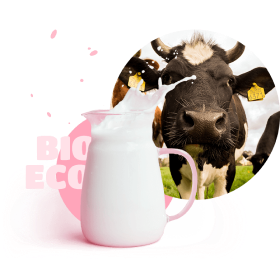ice cream
made with
passion
Lorem ipsum dolor sit amet, consectetur adipiscing elit, sed do eiusmod tempor incididunt ut labore et
16cafes
23food trucks
Lorem ipsum dolor sit amet, consectetur adipiscing elit, sed do eiusmod tempor incididunt ut labore et
16cafes
23food trucks
Lorem ipsum dolor sit amet, consectetur adipiscing elit, sed do eiusmod tempor incididunt ut labore et
Lorem ipsum dolor sit amet consectetur adipisicing elit. Porro ipsa excepturi ut dolorem, sint nobis. Porro cum consequatur magnam modi?
Lorem ipsum dolor sit amet, consectetur adipiscing elit, sed do eiusmod tempor incididunt ut labore et
Lorem ipsum dolor sit amet consectetur adipisicing elit. Porro ipsa excepturi ut dolorem, sint nobis. Porro cum consequatur magnam modi?
Lorem ipsum dolor sit amet, consectetur adipiscing elit, sed do eiusmod tempor incididunt ut labore et
Lorem ipsum dolor sit amet consectetur adipisicing elit. Porro ipsa excepturi ut dolorem, sint nobis. Porro cum consequatur magnam modi?
TRADITION AND LOVE

Fusce ut velit laoreet, tempus arcu eu, molestie tortor. Nam vel justo cursus, faucibus lorem eget, egestas eros. Maecenas eleifend erat at justo fringilla.
Curabitur lacinia enim at ex blandit, vel pellentesque odio elementum. Mauris rhoncus orci in imperdiet placerat. Vestibulum euismod nisl suscipit ligula volutpat, a feugiat urna maximus. Cras massa nibh, tincidunt. Aliquam erat volutpat. Aenean accumsan.
Read more
Ice cream production technology consists of several stages:
1. preparation of raw materials from which the product will be made later;
2. mixing of all necessary components, in accordance with the recipe and state regulations;
3. filtering the obtained mass;
4. pasteurization (heating) and homogenization (grinding) of the mass;
5. cooling;
6. mass freezing (saturation of ice cream with air);
7. hardening (the process of "freezing" excess moisture);
8. packing and packaging of the product;
9. storage until the moment of transfer to the point of sale.
This moves milk across a membrane under moderate pressure, which holds back protein, fat globules, and a large amount of calcium complexes. Water and lactose (the sugar in milk) pass through, leaving behind a very protein and calcium-rich product. The fat content can be adjusted to suit consumer preference.
Milk is put under pressure through fine nozzles, which evenly disperses fat globules. This stops the cream separating and rising to the top, allowing a more consistent texture and taste. Some manufacturers produce unhomogenised milk for people who prefer the cream to separate and rise to the top of the bottle. Today's farm technology, cattle management and factory methods allow for greater consistency of milk, and milk composition can be adjusted for year-round consistency. Milk composition is standardised so elements like fat content are made consistent no matter the season or breed of cow the milk comes from. The composition of milk is governed by the Food Standards Australia New Zealand Food Standards Code. These standards are consistent with international standards – milk consumed in nearly all developed countries will have very similar standards. The Code allows manufacturers to add or withdraw milk components to standardise the composition of milk sourced from dairy farms, as required, to produce nutritionally consistent and safe products. Under the Code, the standard for packaged full-fat milk requires that it contain at least 3.2% of fat and 3.0% of protein.
In order to standardise milk year-round, some manufacturers use a process called ultrafiltration where a membrane filter separates certain elements from milk (just like in the descriptions above). Milk is passed through a very fine filter, and the lactose (milk sugar), vitamins and minerals that filter through are referred to as "permeate". Permeate is a technical term which applies to all membrane filtration processes used across food production and other industries. For example, when producing apple juice the fruit is put through a similar filtration process where permeate is the clear juice we end up buying and consuming. In milk processing, the word "permeate" does not refer to anything added which was not already part of milk. That filter helps milk producers make milk with consistent properties, which helps it conform to the Food Standards Australia New Zealand Food Standards Code.
Aliquam ac dui vel dui vulputate consectetur. Mauris massa.
Aliquam ac dui vel dui vulputate consectetur. Mauris massa.
Aliquam ac dui vel dui vulputate consectetur. Mauris massa.
CAFE
Fusce ut velit laoreet, tempus arcu molestie vulputate
06:00 AM - 10:00 PM
FOOD TRUCK
Fusce ut velit laoreet, tempus arcu molestie vulputate
06:00 AM - 10:00 PM
CAFE
Fusce ut velit laoreet, tempus arcu molestie vulputate
06:00 AM - 10:00 PM
Our Locations
Your order